Did you know that chandeliers have been around long before Edison invented the lightbulb?
Yes!
This is because a chandelier is essentially just a light fixture. So, before bulbs came into the scene, people used candles and crystal prisms to refract light. Classic chandeliers are known to be very ornate, with several crystal prisms to help increase the amount of light that’s produced.
Modern chandeliers, on the other hand, are more minimalistic and do not often have arrays of crystals on them.
Let’s check out the oldest chandeliers in the world!
Oldest Chandeliers in the World
9. Bohemian glass chandelier (20th century)
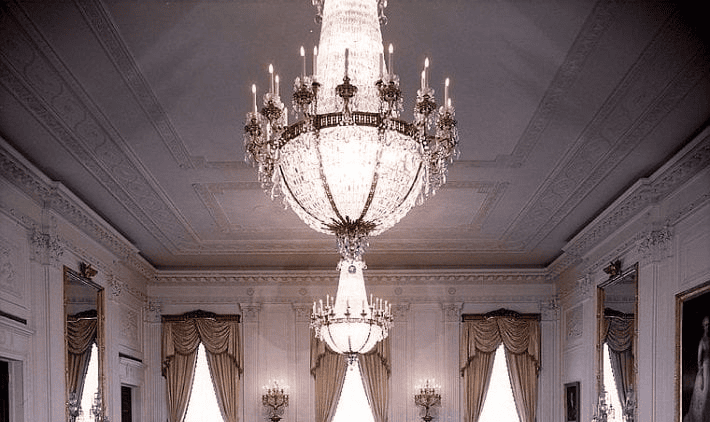
These Bohemian glass chandeliers were commissioned by President Theodore Roosevelt in 1902 for the White House. This is a set of three, all found in the East Wing of the White House.
The East Room is traditionally used for banquets, ceremonies and important conferences. These ornate chandeliers have seen the most important people in history, from kings to billionaires and philanthropists.
At the time of its commissioning, Bohemian chandeliers were considered to be the finest light fixtures money could buy, and it is still true. These chandeliers have 6,000 pieces of individually cut glass!
8. Osler chandelier (19th century)
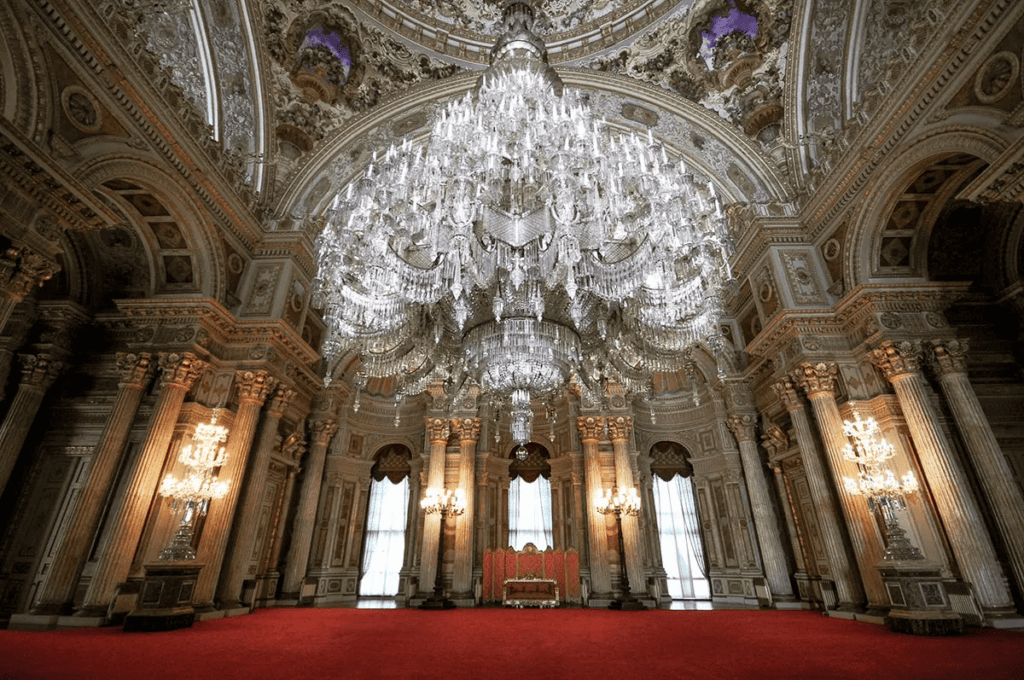
This ornate English-design chandelier by F & C Osler can be found in the Dolmabahce Palace in Istanbul. One of the most decadent palaces in Turkey, the Dolambahce Palace is a treasure-trove for antique chandelier lovers. At the time, this chandelier was the biggest in the world!
This Osler chandelier was initially believed to be a gift from Queen Victoria to the Sultan since it was manufactured by her favorite glassmakers. But, upon later investigation, a receipt for it was found, proving that the Sultan himself had paid for it in full.
Out of all the magnificent chandeliers in the palace, this 750-light Bohemian artwork is definitely the showstopper.
7. Baccarat crystal chandelier (19th century)
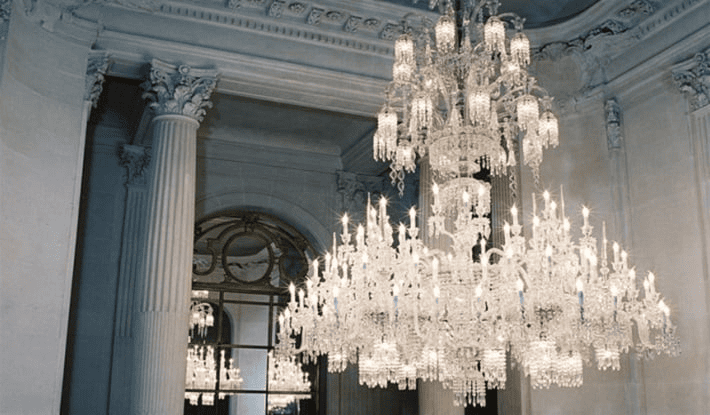
Baccarat is one of the world’s most eminent glassmakers. But, it was not always so. The company was established in 1764 and did not make their breakthrough till the 19th century. And it’s not hard to believe that THIS elegant fixture is what propelled them to new levels of fame.
While creating this masterpiece, the glassmakers learnt the art of making simple, clear glass resemble rock crystals. This skill is what made Baccarat stand out from the rest and even be a threat to well-established glassmakers like Bohemia and Murano.
6. Opera Garnier chandelier (19th century)
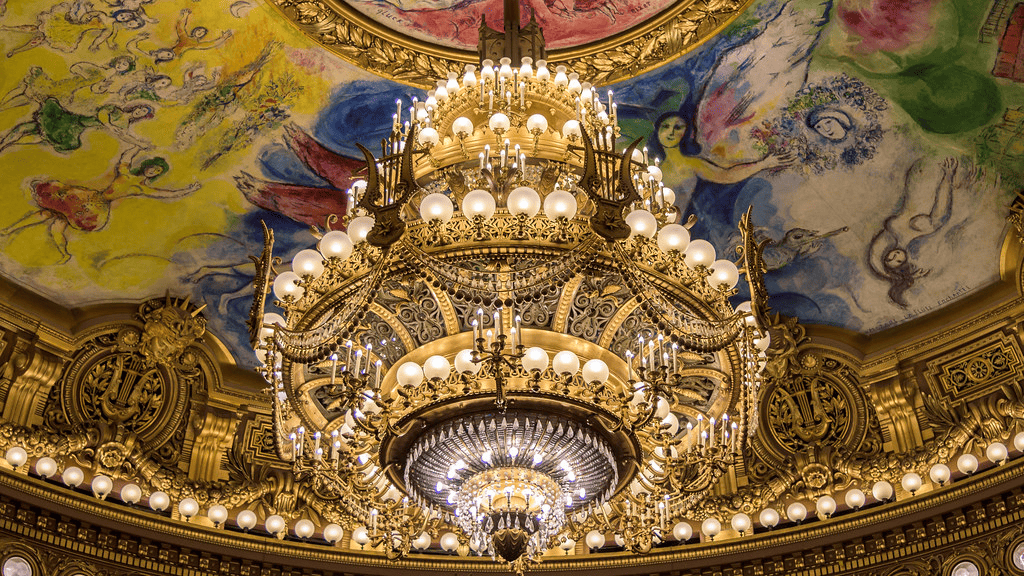
This chandelier’s history is so iconic, it made its way into one of the most popular plays of all time! The famous falling chandelier in Andrew Lloyd Webber’s The Phantom of the Opera is actually based off an incident with this very fixture.
When it was initialy installed in Palais Garnier, it fell from the ceiling due to its extreme weight. The seven ton bronze and crystal chandelier caused the death of a contruction worker, but this did not deter Garnier, the designer of the chandelier and owner of the palace.
Garnier reinstalled the chandelier despite severe criticism for the danger it posed and the fact that it blocked the view of anyone who was in the top tier of the Palais Garnier.
5. Venetian Murano glass chandelier (18th Century)
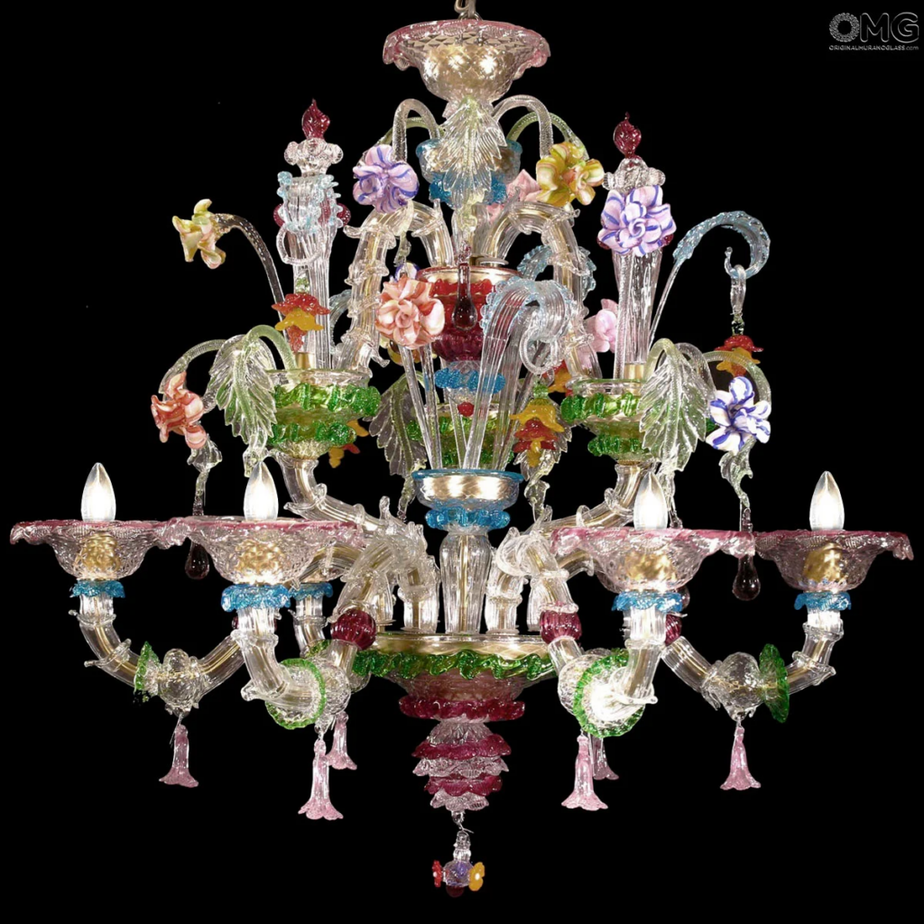
Murano glassmakers, famous for their work since the Middle Ages, are a class apart when it comes to chandeliers. They famously do not use crystals, like many of their competitors do. Instead, their chandeliers are made entirely of colored glass, known as “millefiori” (meaning multi-colored).
Heavily influenced by the Rococo period, Murano’s chandeliers were exquisite and floral. They did not shy away from using as many floral themes as possible and, with the “millefiori”, it took the beauty of their glassware to another level.
4. The ‘Stupendous Chandelier’ (18th century)
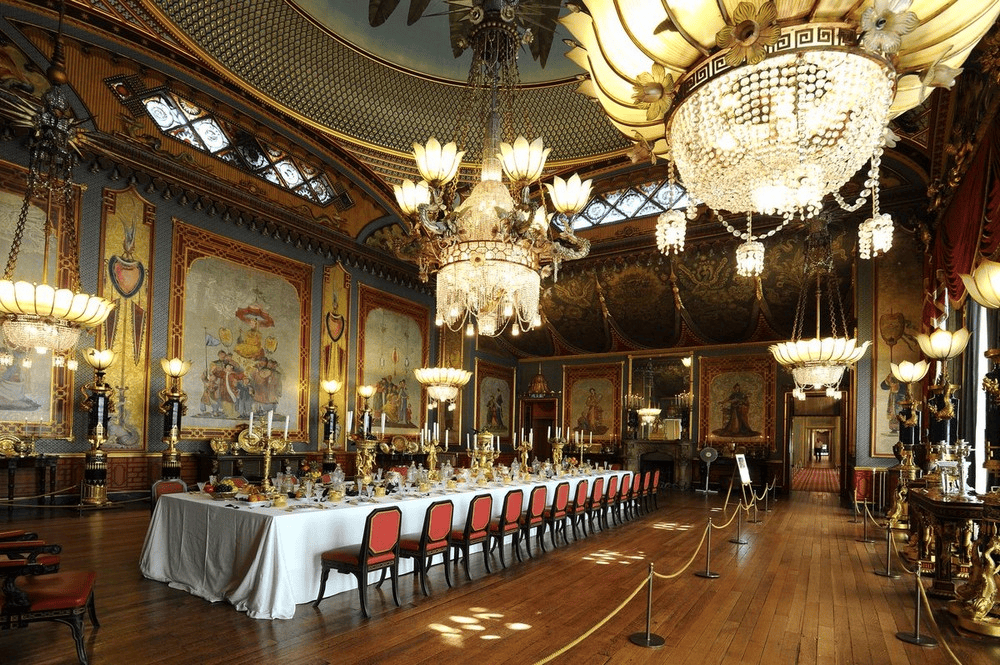
This chandelier was installed in The Royal Pavilion in Brighton, England. The Pavilion is a wacky compilation of styles, inspired not only by the styles of the British Georgian era, but also those of India and China.
The chandelier, as a result, is also a chinoiserie-inspired piece. It is over 45 feet in height and is suspended from a large silver dragon mounted on the ceiling. The glass lights look like flames coming from the dragon.
John George Bishop used the word “stupendous”, while describing the eclectic affair. This description gave this iconic fixture its name.
3. Givenchy Royal Hanover Chandelier (18th century)
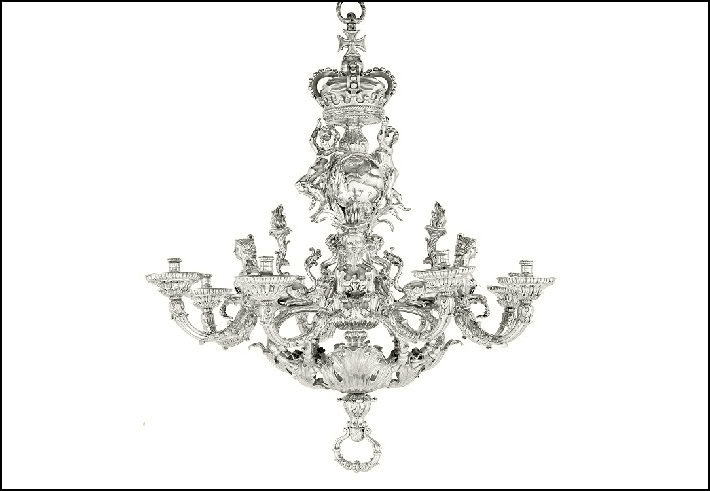
This solid silver chandelier was commissioned by the Hanoverian King George II of England for one of his German palaces. It stayed in his family for over 200 years till it was sold in an auction in 2011 for a whopping £6 million!
What’s interesting about this masterpiece is that King George II allegedly commissioned it (and other chandeliers) for his German palace so he could spend more time with his mistress, Amalie.
2. Baroque period ormolu chandelier (17th century)
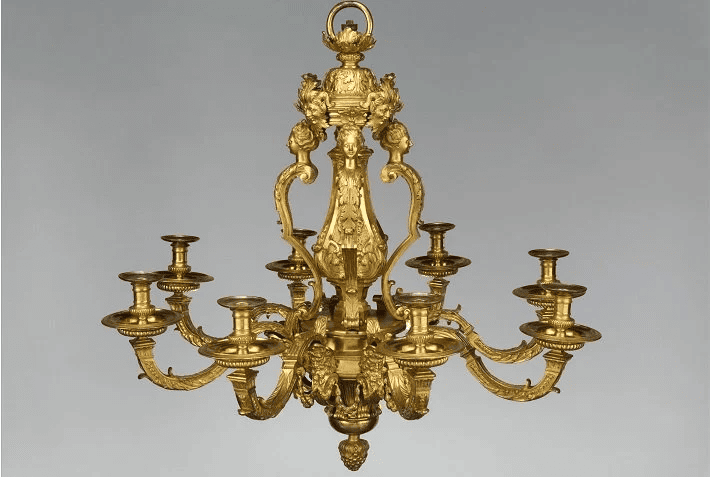
This ormolu chandelier is attributed to Andre-Charles Boulle, perhaps one of the greatest furniture designers in the world. Although he is mostly known for his furniture, he also designed a number of chandeliers in the 17th century.
His chandeliers are known for their exquisite ornamentation and his work with ormolu, or gilt bronze. This eight-light chandelier gives off a brilliant yellow glow due to the coupling of the gilding effect and candlelight.
1. Azelin Chandelier (11th century)
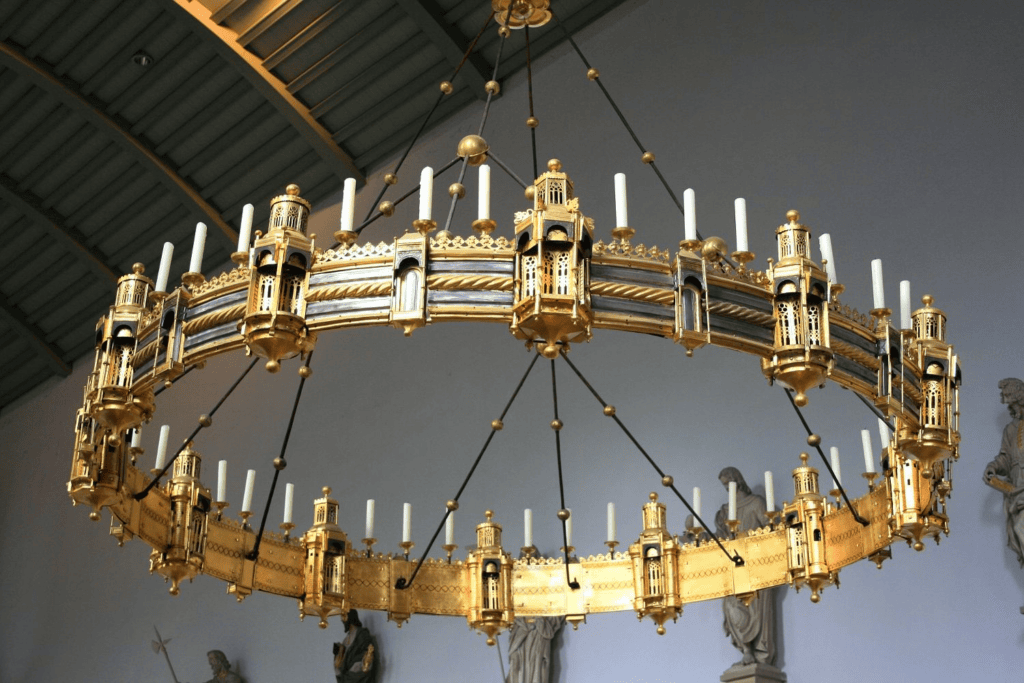
This Azelin chandelier is the world’s OLDEST chandelier in existence! It is a Romanesque wheel chandelier designed for the Hildesheim Cathedral in Germany. It is the oldest of the four extant wheel chandeliers from the 11th century.
This chandelier is made of gilt copper and tinplate. The style is very minimalistic, as opposed to the designs that succeeded it. It is named after its donor, Bishop Azelin, although later research has found that his predecessor, Thietmar, was more likely to be the patron. So, it is also sometimes referred to as the Thietmar chandelier.
Conclusion
Ever since the Middle Ages, chandeliers have been popular amongst the aristocracy. They have been hosted in several homes and palaces of kings, queens, billionaires and the likes.
From intricate floral and silver designs to completely crystal, minimalist styles, chandeliers have seen an evolution like no other. Pre-modern chandelier design was maximalism at its best, but now, glassmakers have become more inclined to minimalistic styles.











